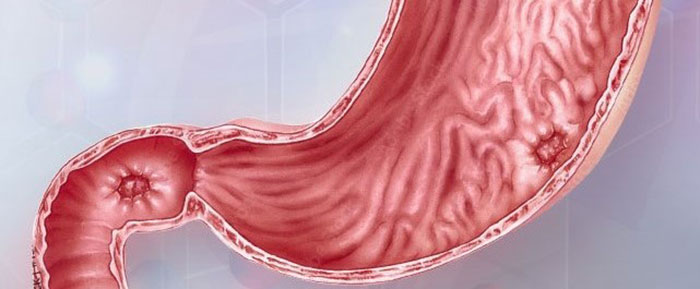 STERIS University
STERIS University
6 Courses

Surgical Patient Safety
Creating an Ecosystem of Safety for the Surgical Care Environment - Webinar
The surgical care environment contains many elements that must be optimized in order to deliver safe patient care and to create a safe place of employment. Failure to account for certain elements within the perioperative environment may result in surgical site infections, decreased efficiency, negative effects on the staff, compromised cybersecurity, or negative patient outcomes. An integrated environment of care, one in which many elements should be considered such as air quality, equipment, and room layout, must be established to ensure a safe clinical environment for both patients and staff.
Objectives:
- Review important elements in creating a culture of safety in the perioperative setting for patients, staff, and other stakeholders
- Describe potential consequences of an ineffective safety culture
- Discuss best practices in designing a surgical suite to deliver safe perioperative care and support positive patient outcomes
- Identify key factors to be considered when creating the environment of perioperative care, including product selection criteria
- Discuss elements that create a safe, ergonomic, efficient workplace for surgical team members

Surgical Patient Safety
Electrosurgery 101 - Principals and Applications for Gastroenterology - Webinar
An Introduction to the use of electrosurgery in gastrointestinal endoscopy procedures.
Objectives:
• Fundamentals of Electrosurgery
• Electrosurgical Units
• Active Electrodes
• The Patient
• Safety

Surgical Patient Safety
Gastrointestinal Bleeding: Types, Challenges and Endoscopic Management - Webinar
Bleeding from the gastrointestinal (GI) tract is the one of the most demanding emergencies for Gastroenterologists and GI nurses. This program discusses some of the challenges that clinicians may face when caring for patients with GI bleeds and solutions that may help save lives. Learn guidelines and practices to appropriately stratify and treat upper and lower gastrointestinal bleeds endoscopically.
Objectives:
- Identify Types of Upper and Lower GI Bleeding
- Discuss Patient Assessment, Evaluation and Risk Stratification Methods
- Review Causes Upper and Lower GI Bleeding
- Describe Endoscopic Therapies for Gastrointestinal Bleeding

Surgical Patient Safety
How Not to Get Burned: Electrosurgery Fundamentals, Function, and Safety - Webinar
Electrosurgery, the use of radio frequency electrical current to create heat in cells to cut or coagulate tissues, is used daily by Operating Room professionals. Current research reveals that perioperative professionals and providers would benefit from routine refresher courses. This course provides a detailed explanation of how electrosurgery works on an atomic level, describes how the Electrosurgical unit provides controllable, predictable tissue effects, and discusses common complications with AORN and AST recommended guidelines to avoid these complications.
Objectives:
Define electrosurgery
Name individuals who contributed to current electrosurgical practice
Discuss electricity basics
Explain the difference between monopolar and bipolar instruments
Distinguish between electrosurgery and electrocautery
Explain the three functions of the electrosurgical unit (ESU)
Distinguish the duty cycles of the electrosurgical unit (ESU)
Name complications of electrosurgery
List ways to prevent complications of electrosurgery

Surgical Patient Safety
Let’s Clear the Air Between Us: Safe and Effective Surgical Smoke Evacuation - Webinar
An estimated 90% of all surgical procedures produce surgical smoke, including such common surgeries as cesarean sections, mastectomies, knee replacements, and appendectomies. In this course we will examine the clinical considerations for active smoke evacuation. New legislative efforts are underway to make smoke evacuation systems a requirement in the Operating Room. We will review the important features and technical considerations for safe, effective, and easily adaptable smoke evacuation systems.
Objectives:
- Explain the health hazards of surgical smoke to operating room staff and patients.
- Describe clinical considerations for a smoke evacuation system that will facilitate eliminating smoke from the operating room.
- Discuss the status of state legislation mandating the evacuation of surgical smoke.
- Describe the requirements for active smoke evacuation and the important features for safe, effective, an easily adaptable smoke evacuation systems.

Surgical Patient Safety
The Ins and Outs of Counts - Advances in Surgical Count Technology - Webinar
Retained Surgical Items continue to be one of the top sentinel events to The Joint Commission and Unintended Retained Surgical Items continue to cause injury to patients. As a never event, it is considered 100% preventable. This course will examine the incidence and pattern of RSIs and describe available adjunct technology for incorporation into the manual count process to improve accuracy of counts, reduce near misses, and prevent RSIs.
Objectives:
- Identify challenges associated with manual counting of surgical sponges.
- Describe adjunct technologies available to supplement manual counting procedures and prevent RSIs.
- Discuss strategies for combining adjunct technologies with manual counting procedures to minimize the risk of RSIs and improve patient safety in healthcare facilities.
